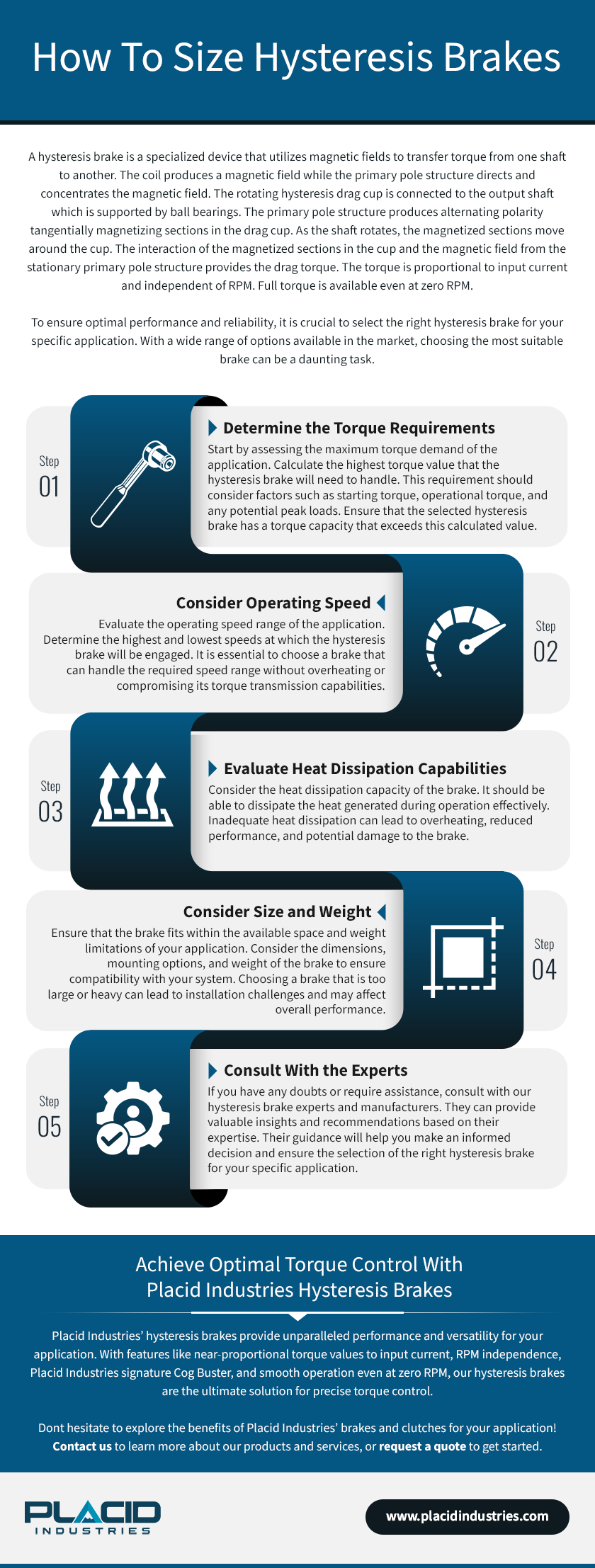How To Size Hysteresis Brakes
A hysteresis brake is a specialized device that utilizes magnetic fields to transfer torque from one shaft to another. The coil produces a magnetic field while the primary pole structure directs and concentrates the magnetic field. The rotating hysteresis drag cup is connected to the output shaft which is supported by ball bearings. The primary pole structure produces alternating polarity tangentially magnetizing sections in the drag cup. As the shaft rotates, the magnetized sections move around the cup. The interaction of the magnetized sections in the cup and the magnetic field from the stationary primary pole structure provides the drag torque. The torque is nearly proportional to input current and independent of RPM. Full torque is available even at zero RPM.
To ensure optimal performance and reliability, it is crucial to select the right hysteresis brake for your specific application. With a wide range of options available in the market, choosing the most suitable brake can be a daunting task. This article will guide you through the steps to effectively select the perfect hysteresis brake for your needs.
Step 1: Determine the Torque Requirements
Start by assessing the maximum torque demand of the application. Calculate the highest torque value that the hysteresis brake will need to handle. This requirement should consider factors such as starting torque, operational torque, and any potential peak loads. Ensure that the selected hysteresis brake has a torque capacity that exceeds this calculated value.
Step 2: Consider Operating Speed
Evaluate the operating speed range of the application. Determine the highest and lowest speeds at which the hysteresis brake will be engaged. It is essential to choose a brake that can handle the required speed range without overheating or compromising its torque transmission capabilities.
Step 3: Evaluate Heat Dissipation Capabilities
Consider the heat dissipation capacity of the brake. It should be able to dissipate the heat generated during operation effectively. Inadequate heat dissipation can lead to overheating, reduced performance, and potential damage to the brake..
Step 4: Consider Size and Weight
Ensure that the brake fits within the available space and weight limitations of your application. Consider the dimensions, mounting options, and weight of the brake to ensure compatibility with your system. Choosing a brake that is too large or heavy can lead to installation challenges and may affect overall performance.
Step 5: Consult With the Experts
If you have any doubts or require assistance, consult with our hysteresis brake experts and manufacturers. They can provide valuable insights and recommendations based on their expertise. Their guidance will help you make an informed decision and ensure the selection of the right hysteresis brake for your specific application.
Achieve Optimal Torque Control With Placid Industries Hysteresis Brakes
Placid Industries’ hysteresis brakes provide unparalleled performance and versatility for your application. With features like near-proportional torque values to input current, RPM independence, Placid Industries signature Cog Buster, and smooth operation even at zero RPM, our hysteresis brakes are the ultimate solution for precise torque control.
Dont hesitate to explore the benefits of Placid Industries’ brakes and clutches for your application! Contact us to learn more about our products and services, or request a quote to get started.

